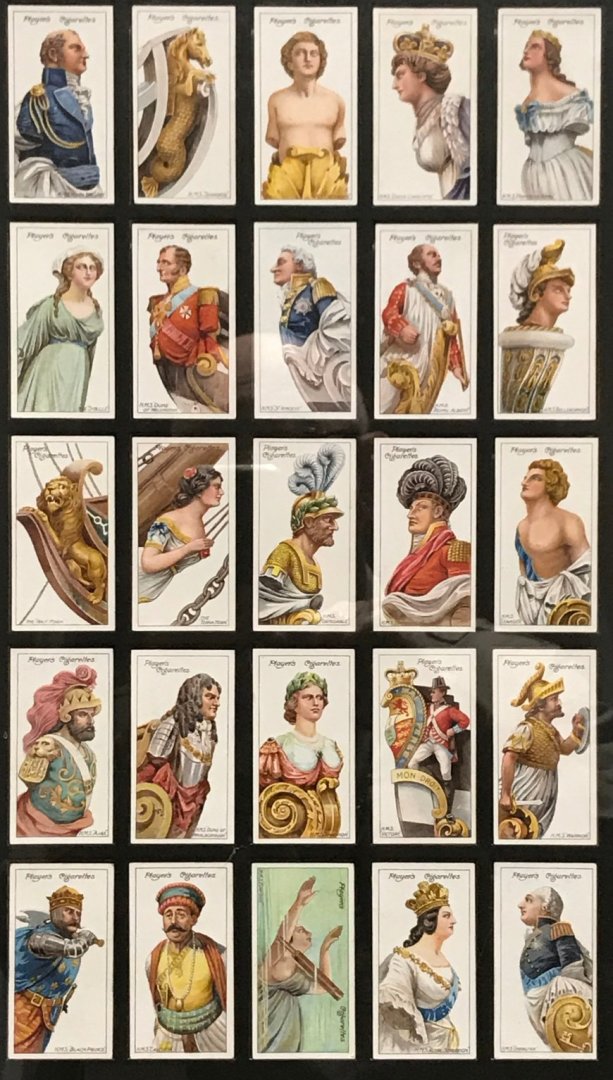-
Posts
13,369 -
Joined
-
Last visited
Content Type
Profiles
Forums
Gallery
Events
Everything posted by druxey
-

Stitching sails with sewing machine
druxey replied to Jorge Hedges's topic in Masting, rigging and sails
Might I suggest that, for a scale model, stitching is not the best or easiest option? However, fine the stitching, it will always be way over scale. Also, as you've discovered, stitching a straight line is very tricky. Let me suggest another possibility: First, gently stretch the uncut material over plastic wrap. Give it a dilute coat of acrylic matt medium to slightly stiffen it. Also, when you cut the material, it will not fray. When it is dry, mark out the shape of the sail in pencil, then another set of lines outside this to give the 'hem'. Draw pencil lines the width of the sail cloths apart or, if this is at a large scale, a double set of lines. Using a straightedge this should be easy! Cut the sail out to the outer lines. Turn over the edges and either glue them down with white glue or matt medium. Detail the sail to taste and you are done. -
-
In post #31 the armed, crowned figure striking with his sword is Black Prince. One of a series of Players' cigarette cards of figureheads features this.
-

Syren Servo-Matic mouse making attachment
druxey replied to WalrusGuy's topic in Masting, rigging and sails
The issue with making an authentic looking mouse is that it is woven, not spun. An uneven number of longitudinal threads have line wrapped around them, but in an in-and-out fashion. The only assistance by a serving machine would be to slowly revolve the mouse as you weave. It's a labor-intensive exercise! There are other ways of making a reasonably good looking mouse, as I'm sure you can find elsewhere on this site. -
Welcome, neighbour! There is at least one other member of the forum also in Welland.
-
'Shoal' was a variant of the word 'sole' which, if you think about it, makes perfect sense in this context!
-

MicroLux/Micro-make power chisel
druxey replied to wlell's topic in Modeling tools and Workshop Equipment
Another possibility is a well-sharpened chisel held bevel side down. -

Reducing mast circumference without a lathe
druxey replied to Charlie pal's topic in Masting, rigging and sails
You cut the spar four-square first. Lay out the shape on one side of your blank and cut it out to profile. The turn it 90 degrees and re-mark the profile. Cut to shape again to get a square but tapered piece. Next, mark the spar at intervals using a 7:10:7 scale. (This is covered elsewhere on this forum.) With the spar held in a 45 degree 'V' jig, it is cut to eight square (octagonal). From there it is easy to round off and finish the spar. -
You're getting there.... I find it always seems to take forever until I've rounded the turn of the bilge.
- 740 replies
-
- Tudor
- restoration
-
(and 4 more)
Tagged with:
-
Mark: that link does also offer the possibility "Make an offer".
-
That dentillated molding is so well done it made me smile!
- 2,699 replies
-
- heller
- soleil royal
-
(and 9 more)
Tagged with:
-

A collection of figureheads and a few stories
druxey replied to bruce d's topic in Nautical/Naval History
You keep turning up little gems, Bruce! Thank you. -
Hanging knees in the Great Cabin would take up space and interfere with nice panelling and cornices!
-
The deck plans are usually 'as built', not 'as designed'. These were the records for future repair work.
-
Yes, I buy HSS number drills in small sizes in bulk as well now that they are easily available. Curiously, now I've a good supply, I rarely break one!
About us
Modelshipworld - Advancing Ship Modeling through Research
SSL Secured
Your security is important for us so this Website is SSL-Secured
NRG Mailing Address
Nautical Research Guild
237 South Lincoln Street
Westmont IL, 60559-1917
Model Ship World ® and the MSW logo are Registered Trademarks, and belong to the Nautical Research Guild (United States Patent and Trademark Office: No. 6,929,264 & No. 6,929,274, registered Dec. 20, 2022)
Helpful Links
About the NRG
If you enjoy building ship models that are historically accurate as well as beautiful, then The Nautical Research Guild (NRG) is just right for you.
The Guild is a non-profit educational organization whose mission is to “Advance Ship Modeling Through Research”. We provide support to our members in their efforts to raise the quality of their model ships.
The Nautical Research Guild has published our world-renowned quarterly magazine, The Nautical Research Journal, since 1955. The pages of the Journal are full of articles by accomplished ship modelers who show you how they create those exquisite details on their models, and by maritime historians who show you the correct details to build. The Journal is available in both print and digital editions. Go to the NRG web site (www.thenrg.org) to download a complimentary digital copy of the Journal. The NRG also publishes plan sets, books and compilations of back issues of the Journal and the former Ships in Scale and Model Ship Builder magazines.





